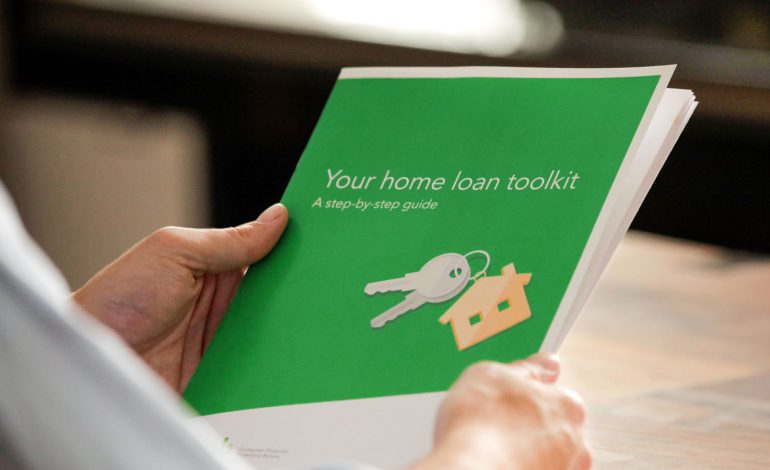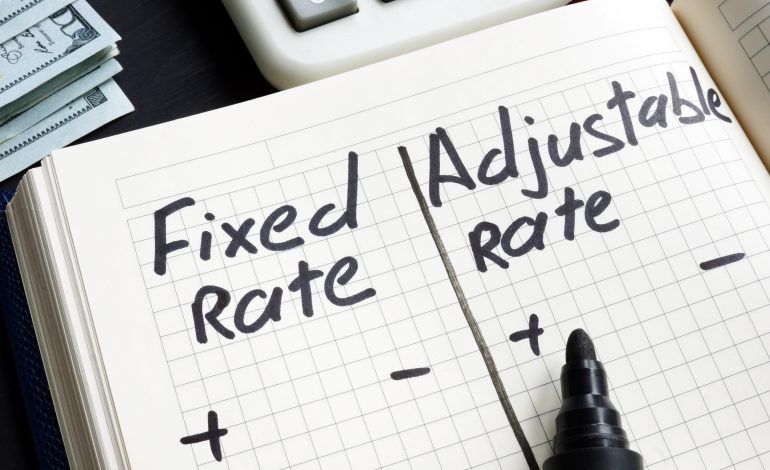When you refinance your mortgage, you take out a new loan to pay off your old mortgage loan. However, it’s crucial to understand how the process functions as well as the advantages and disadvantages of mortgage refinancing before you begin.
Your current house loan is replaced with a new one through a mortgage refinance. People frequently refinance in order to lower their interest rates, decrease their monthly payments, or access equity in their homes. Others use refinancing to pay off a mortgage more quickly, avoid paying FHA mortgage insurance, or change from an adjustable rate to a fixed-rate loan.
Let’s first think about a few crucial preliminary elements of refinancing a mortgage, and then walk through the procedure step by step.
When you buy a home, you typically pay for it with a mortgage. The lender pays the money to the home seller, then you pay the lender back, typically monthly. When refinancing a home, you get a new mortgage. Instead of the lender paying the home’s seller, it pays off the balance of your old home loan. You’ll pay the lender back based on the amount of your new mortgage.
Similar to getting a purchase mortgage, refinancing requires you to file an application, go through the underwriting process, and close.
Simply put: If mortgage rates are lower now than they were when you bought your house, a refinance could save you money — and that’s when it makes the most sense. With a lower interest rate, your monthly mortgage payment will be lower.
Conversely, even if you intend to refinance for another reason — such as to get rid of your FHA mortgage insurance premium — you’ll want to do some math if rates have gone up since you bought your home. Depending on how much rates have increased, you may be better off sticking with your original mortgage.
Mortgage rates fluctuate with market forces, so you can’t control when the rates go down. However, some factors within your control — like your credit score — impact the rates lenders offer you. So if your credit score is better now than when you bought your house, that’s another way you can potentially refinance to a lower rate.
The process of refinancing a mortgage is similar to the process you went through when you obtained your first mortgage loan. Here are the steps you’ll need to take.
1. Assess Your Situation
The qualifications for refinancing a mortgage are similar to the criteria for a new mortgage loan. Lenders will consider several factors, including your:
- Credit history and score
- Payment history on your existing loan
- Income and employment history
- Equity in the home
- Home’s current value
- Other debt obligations
As a result, you’ll want to review where you stand in each of these areas to determine your eligibility. If, for example, you have a spotless credit history, a solid income and a lot of equity in your home, you may get approved for better terms on a new loan.
If, however, your credit score has gone down since you got your first mortgage or you have more overall debt, you may have a harder time getting approved for more favorable terms.
2. Shop Around
Go through the preapproval process with multiple mortgage lenders so you can compare interest rates and other terms. This will give you the highest chance of finding the best offer that’s available for you.
In addition to comparing refinance offers with each other, you’ll also want to compare what you’re seeing with your current mortgage loan terms. This can help you determine whether refinancing is the right move.
3. Run the Numbers
Once you’ve chosen the best offer that’s available to you, compare the potential savings to the potential costs.
For example, if refinancing your loan with a new lender costs $5,000 upfront, and your new monthly payment is just $100 lower than what you were previously paying, you’d need to stay in the home for at least 50 months to make refinancing worth it. If you’re not planning on staying in the home very long, refinancing may not be the right move.
Read Also: Understanding The Loan Process
Also, watch out for things like prepayment penalties, which can cause problems down the road if you pay off your existing mortgage early or refinance again.
4. Submit Your Application
When you’re ready to submit an official application, you’ll do so directly with the lender of your choice. You’ll need to provide information about yourself, your home and your existing mortgage loan.
You’ll also need to provide documentation for various aspects of the application. Potential documents include:
- Recent pay stubs
- W-2 forms
- Bank statements
- Tax returns
- Business income statements
- Investment account statements
- Alimony and child support information, if applicable
- Copy of your government-issued photo identification
- Proof of legal U.S. residency
- Sources of funds
- Gift letter that explains you don’t need to pay back gifted cash, if applicable
On average, this process can take 48 days from the date of the application to the closing date, according to ICE Mortgage Technology, a company that works with lenders. However, some lenders promise faster closing times.
5. Close Your Loan
Once the lender is ready to close the loan, you’ll come together and sign the paperwork to make everything official. Then, the lender will pay off your original loan and open an account for your new loan.
If you’re getting a cash-out to refinance, you’ll receive the cash in the form of a check or wire transfer.
Here are some common situations when you might consider refinancing.
Reduce the monthly payment
When your goal is to pay less every month, you can refinance into a loan with a lower interest rate. A rate and term refinance is a good fit for this goal.
Pay off the loan faster
When you refinance to a shorter term, such as from a 30-year mortgage into a 15-year loan, you pay less interest over the life of the loan, but monthly payments usually go up. If you’d like to pay off your loan faster, but rates have risen, consider making extra payments on your current loan.
Lengthen the repayment term
On the flip side: You could extend the loan term — say, from 15 years to 30 — to lower your monthly payment. However, you’ll end up taking even longer to pay off your house and paying more interest over the long run. There are other ways to lower your monthly mortgage payment if you’re facing financial hardship, so consider the pros and cons before refinancing to a longer term. (And keep in mind that, if rates are higher now than when you bought your home, your savings might be impacted.)
Tap into equity
When you refinance to borrow more than you owe on your current loan, the lender gives you a check for the difference. This is called a cash-out refinance. Depending on your credit score and rates when you refinance, it’s possible to get a cash-out to refinance and a lower interest rate at the same time.
Get rid of FHA mortgage insurance
Private mortgage insurance on conventional home loans can be canceled, but in many cases, the Federal Housing Administration mortgage insurance premium you pay on FHA loans cannot. If your FHA mortgage insurance premiums will last for the term of your loan, you can get rid of them if you refinance to a conventional loan when you have accumulated at least 20% equity. To calculate your home equity, estimate your home value, then subtract your mortgage balance.
Switch from an adjustable- to a fixed-rate loan
Interest rates on adjustable-rate mortgages can go up over time. Fixed-rate loans stay the same. Refinancing from an ARM to a fixed-rate loan provides financial stability when you prefer steady payments.
What is the Difference Between a Mortgage And a Refinance?
Both refinance and purchase mortgages are types of home loans, but they have quite distinct goals. Homebuyers who want to finance the purchase of a new home might apply for a purchase mortgage. Homeowners can alter their mortgage rate and terms by refinancing their mortgage. Although the requirements and components for purchase and refinance loans may be similar, the procedure and outcomes differ.
A purchase mortgage is a type of loan that homebuyers use to finance a new home. Mortgages are not one-size-fits-all. There are various programs available, but finding the best option largely depends on the buyer’s financial situation and property.
Buying a home is a significant investment that most often requires mortgage assistance. To secure a mortgage, you will need to be pre-approved and meet the specified requirements.
Down Payment
Homebuyers using a purchase mortgage need to secure down payment funds. Down payments typically range between 3% to 20% of the purchase price, depending on the loan.
Credit Score
Homebuyers will also need to be prepared to have their credit pulled. There is no exact credit score requirement for mortgages, but this differs from one lender to another. In general, a credit score in the 600s or higher will put homebuyers in a decent position to qualify for a loan.
Home Appraisal
Once an offer is accepted, homebuyers need to secure a home appraisal. As long as the home appraises at purchase price, homebuyers won’t run into any issues. If the appraisal comes in lower than the planned purchase price, the lender may have to adjust the final closing costs to account for the appraisal shortfall.
Closing Costs
The last step of the purchase mortgage process is to finalize the loan application with underwriting and pay the closing costs. Closing costs are the various fees buyers face when purchasing a new home. Closing costs can accrue from lenders and third parties involved in your loan transaction, such as escrow, home appraisers, and title companies.
Refinancing is an excellent opportunity for homeowners to change their mortgage rate and terms to lower their interest rate, monthly payment, or cash out some of their property’s accumulated equity.
There are two types of refinances available for homeowners:
- Rate/Term Refinance: A rate and term refinance is the refinancing of an existing mortgage to lower the interest rate or change the loan duration (from a 7/1 ARM to a 30-year fixed*, for example) without increasing the loan amount.
- Cash Out Refinance: A cash out loan is the refinancing of an existing mortgage into a larger mortgage that changes the interest and the terms of the loan and advances money to the borrower. Borrowers obtain cash-out mortgages primarily for home improvements and debt consolidations.
Homeowners will need to fill out an online loan application. Once their application is completed and submitted, they will work with a Mortgage Analyst to lock in their new interest rate. Homeowners should check with their lenders to see if they need to obtain a new appraisal.
Next, mortgage Analysts will prepare new loan disclosures for the homeowner and package their file for underwriting’s review. After underwriting gives the homeowner the “clear to close,” the homeowner will have successfully funded a new refinance loan!
Refinancing fees and closing costs are similar to the percentages you’d pay for a purchase mortgage. Typically, they cost 3% to 6% of your outstanding principal balance.
For example: If you still owe $200,000 on your home, expect to pay $6,000 to $12,000 in refinancing fees. Costs vary by lender, so shop around to get the best deal.
You might also be on the hook for extra fees from your current lender. Read the fine print in your purchase mortgage to see if you’ll owe a mortgage prepayment penalty. Some lenders charge a fee if you pay off your mortgage in full in the first three to five years after getting the loan.


